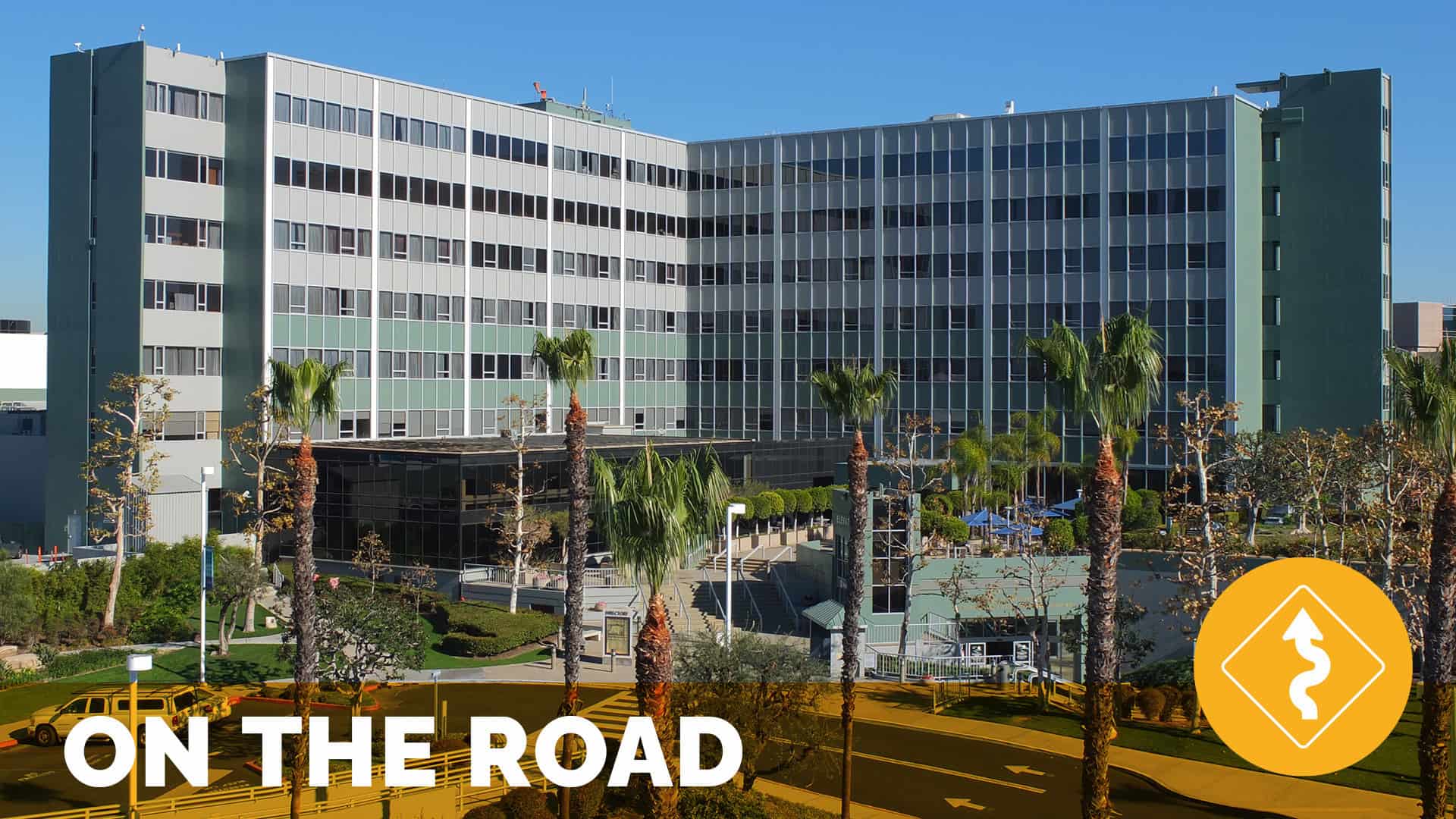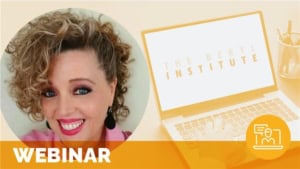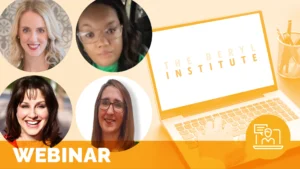A ‘Simply Better’ Culture to Achieving Excellence

On the Road with Memorial Care Long Beach Medical Center – December 2019
by Natalie McKay and Stacy Palmer, CPXP
Our latest On the Road took us to Southern California where we learned about the incredible patient experience work happening at MemorialCare Long Beach Medical Center (LBMC) and Miller Children’s and Women’s Hospital Long Beach (MCWHLB). Both LBMC and MCWHLB share the same campus and are part of MemorialCare, a nonprofit health system which includes four hospitals, medical groups, a health plan, numerous outpatient health centers, imaging centers, surgery centers and dialysis centers throughout Orange and Los Angeles counties.
Our host for the visit was Nick Arce, Director of Patient Experience, who leads LBMC and MCWHLB’s experience programs which include patient relations, interpreter services, guest services and volunteer services. The team was eager to share their efforts and rightfully proud of the successful programs they have built to ensure they live out their organizational values of integrity, accountability, best practices, compassion and synergy.
Living a ‘Simply Better’ Philosophy
Kristin Mascotti, MD, Chief Quality Officer of LBMC & MCWHLB, believes employee engagement is a leading indicator of experience success. A cornerstone of MemorialCare’s experience commitment is its Simply Better philosophy supported by a toolkit to ensure the organization is focused on excellence by every team member in every encounter, every time. The Simply Better toolkit, developed by the MemorialCare Patient and Family Experience Value-Added Team (VAT) and led by Helen Macfie, Pharm.D., Chief Transformation Officer, focuses on five key behaviors and tools to help team members succeed in living relationships that are rooted in care.
“I Greet and Connect”
Foundational to the Simply Better philosophy is the expectation that everyone is greeted with a warm smile and patients, families and colleagues are treated with respect and dignity. Leveraging the AIDET communication framework, all employees receive training and understand the importance of this tool to live out their commitment.
‘I am an Extraordinary Host’
In addition to providing patients with a quiet and healing environment, all staff members are encouraged to seek opportunities to enhance guests’ experiences. One way they do this is with assistance from the Simply Better Trust Fund, a resource available to any team member up to $100.00, to help enhance a guest’s experience. The Simply Better Trust Fund empowers staff to do anything from purchasing reading glasses in the gift shop for a patient to staging a birthday party or wedding.
“Our staff get the opportunity to become so close to patients and families, and they truly know what they need,” said Stephanie Stembridge, Manager of Patient, Family and Volunteer Engagement. “We trust that our employees are going to make the right decision to support our patients.”
“I Guide People”
With an understanding that navigating the hospital can be challenging for visitors, LBMC & MCWHLB team members are committed to escorting guests where they need to go – not just pointing or verbally sharing directions. “I myself have been escorted,” laughed Dr. Mascotti, remembering her early months getting lost at the hospital and having co-workers help her. “The Simply Better philosophy is not just a tool we have; we really live it.”
The idea of guiding people goes beyond wayfinding and also includes a commitment to explain the patient’s care in a way they can understand. Nick Arce acknowledged the importance in training all team members on best practices for communicating in an easy-to-understand manner which avoids medical jargon and increases patient’s comfort and comprehension.
In addition, LBMC serves a linguistically diverse population of limited-English-proficient (LEP) patients and their families. Ensuring that LEP, hearing-impaired, and deaf patients can effectively communicate with hospital staff by means of a professional healthcare interpreter is essential to providing quality patient care. According to Nick Arce, “whether communicating about their medical history or understanding the provider’s assessment of their condition and treatment options, we recognize the importance of bridging communication barriers to support human connection, empathy, and quality clinical care.”.
“I Express Appreciation”
Another key component of the Simply Better philosophy is demonstrating gratitude to patients, families and colleagues. MemorialCare encourages an attitude of gratitude through the Simply Better Recognition Program. When team members – or even patients or families – catch someone in the act of doing a good job, they can acknowledge them by filling out a Simply Better Recognition Card. A committee reviews the submitted cards on a monthly basis and selects the most impactful stories to be highlighted in a quarterly event. “The stories are amazing and emotional,” said Rita Goshert, Manager of Child Life. “We try to get the actual person who wrote the card to be at the event to share the story…but we always forget Kleenex!”
“I am Always Improving”
Understanding there is always an opportunity to be better, MemorialCare LBMC and MCWHLB are committed to listening to patients, families and colleagues to improve the care and service they provide. “All of our board meetings start with a patient story,” shared Dr. Mascotti. “They are not always positive stories, but we learn and get better from them. We get at the heart of listening. The stories remind us to keep it front and center. It grounds us from where we are.”
Managing for Daily Improvement in Patient Experience, Safety, and Progression
We had a great conversation with the LBMC and MCWHLB team around listening to patient stories to drive improvement efforts, and we appreciated their honest acknowledgement that they initially struggled to get at the heart of listening. They began integrating “the voice of the patient” as a strategic initiative and introduced a Patient and Family Advisory Council (PFAC) Lean workshop to assist team members.
It was a perfect transition to learn about their efforts in Managing Daily Improvement (MDI). Championed by Ikenna (Ike) Mmeje, Chief Operating Officer of LBMC & MCWHLB, MDI is a disciplined process that empowers staff to solve problems by giving them the resources and leadership support to make improvements. The expected outcomes of MDI include enhanced employee engagement, a palpable culture of safety, and continuous improvement of health care delivery and patient experience.
Over 300 team members participated in a six-hour training session to learn and understand MDI techniques. The result was an opportunity for staff to develop metrics that would prove beneficial for the improvement of patient experience, safety, and progression. Leaders and front-line staff gather in front of a visibility board, and front-line staff members present information about the previous 24 hours and what the team is working on to address any gaps in performance.
“Before the managers did something every day to solve problems…now everyone on the team does it, steps in and is comfortable doing so,” shared Evy Gomez, RN, Cardiac Monitor Unit, in reflecting on the cultural transformation of MDI for front-line staff.
Senior leaders listen for staff understanding and probe on how they can help remove any barriers to achieving goals as well as any patient or employee safety issues that need immediate attention. Following the MDI rounding, senior leaders huddle to share their learnings and identify any broader issues that need attention at the organizational level. Leaders are assigned to follow-up to address any issues shared during rounds; a tracking process is in place to ensure accountability. Through September 2019, LBMC teams had identified 1,477 issues for the year, and the vast majority of those were reported as resolved.
We had the opportunity to participate in a huddle with the Physical Therapy team and witnessed the energy and buy-in first-hand. The team members were engaged in the process and excited to report on progress or collaboratively identify opportunities for improvement.
Donna Litwinski, Master Lean Fellow, reinforced the importance of all team members being engaged in the process explaining that leaders meet with the night shift for MDI rounding at least once per month. “As physical therapists, we all work on different floors, but I still feel a part of the team even if I don’t work a 12-hour shift,” said Nisa Patel, Physical Therapist. “I just need to look at the MDI board to see how the unit is doing and offer what I can to help. I feel like I’m part of the team, not a visitor.”
Volunteers play an important role in the organization providing service support to LBMC & MCWHLB patients, families and staff by assisting as guest greeters, NICU cuddlers and more. Staff members oversee each department volunteer program in addition to their everyday role, which includes support in the surgical units, emergency departments, cardiac care, diabetes education, inpatient/outpatient rehab, pet therapy, spiritual care, oncology and the ambulatory infusion center. With 776 volunteers, Stephanie Stembridge says they conduct full panel interviews with all volunteers to set expectations. We saw service support in action as soon as we walked into the lobby and were greeted by long-time volunteer Vivian Kapono. Serving the community for almost 18 years, Vivian manages expectations of the lobby and is the first face that patients and families see. Like Vivian, service support volunteers also aid in wayfinding and escorting patients in wheelchairs.
Child Life Program
The Cherese Marie Laulhere Child Life Program serves both MCWHLB and LBMC and includes over 40 staff members. We had the opportunity to hear from Rita Goshert, Clinical Operations Manager of the Child Life Department about the many services she and her staff provide to pediatric patients as well as children of adult patients. Services range from music therapy, artful healing, hospital school, family resources and injury prevention covering seven playrooms, and inpatient and outpatient units including general pediatrics, oncology, PICU, NICU, emergency department, inpatient/outpatient surgery, outpatient clinics and the infusion center/procedure rooms.
Two specific Child Life offerings that we had the chance to learn more about were the Family Resource and NICU Family Support Program and the Hospital School Program. In collaboration with March of Dimes, MCWHLB serves NICU families with activities, education and parent-to-parent mentoring. “The Family Support Program was created with our patients and family voices providing suggestions,” said Rita. We had the opportunity to meet Maria Andrade, Patient and Family Advisor, who understands firsthand the benefit of the NICU Family Support Program, which also includes a NICU Family Center.
“The Family Center was patient-driven. We were able to provide suggestions and feedback on the small things that had big impact, such as placement of the cubicles and storage. My son was in the NICU here, and I felt like all the staff became family members to me. I knew they wanted the best not only for my son, but for me and my husband. Statistics show divorce is most likely for NICU parents. The nurses gave us a gift card so we could go on a date night, and I had peace of mind that my son was going to be in great care.”
Partnering with the Long Beach Unified School District, the Hospital School Program provides educational support to patients who may be missing three weeks or less of school. The program allows pediatric patients to continue with their academic goals and is a true representation of hospital collaboration with community partners to ensure academic success is not interrupted during the hospital stay.
Spiritual Care
We were also joined by Rev. Candace Kelly, Staff Chaplain for the Birthcare Center and NICU, to learn more about the chaplaincy and bedside offerings in the spiritual care department. This program works closely with the entire healthcare team to meet the individual, spiritual and emotional needs of patients at both hospitals. The chaplains offer emotional support in coping with illness and grief to all age groups and also address cultural rituals for individuals for all belief systems.
“We meet patients’ needs right where they are. What do they need most at that time? We discern what is most stressful and unearth those resources for them while trying to minimize additional stressors,” said Kelly.
This department also sources the help of trained volunteers to provide patients with a listening companion through the Compassionate Companion program. Kelly shared how patients may simply need someone to listen at the bedside, so volunteers are trained to be present, to validate, honor and appreciate the patient.
In addition to extensive bereavement support, the spiritual care department supports staff with bundled resources for staff resiliency and ways to maintain joy of work. An example of caring for the caregivers is through the recently added program called RISE – Resilience in Stressful Events. This is a hospital-based program that provides peer-to-peer support to caregivers experiencing trauma from an adverse clinical care experience. “We are especially trained to provide confidential support for our distressed colleagues,” said Kelly. Staff trained for the program display RISE pins on their name badges.
Patient Relations
The Patient Relations department is comprised of three team members serving both patients and families and healthcare staff by capturing and managing patient and family complaints. Nydia Velasco Alvarez, Manager of Patient Relations & Interpreter Services, shared a variety of ways they capture complaints: patient relations hotline, daily “courtesy” patient rounds, daily leadership safety huddles and social media posts. The Patient Relations team partners with staff to try to address patient concerns in real-time, using the AHEART framework – Apologize, Hear, Empathize, Ask, Resolve, and Thank – to turn concerns into a learning opportunity. In addition to using Simply Better Trust Funds, there are Service Recovery kits available on every unit with items such as parking passes or dining cards for staff to provide to patients and families as a gesture of apology. “We can’t change their experience, but we do our best to make it better when we can,” said Velasco Alvarez.
Interpreter Services
MemorialCare LBMC and MCWHLB is committed to diversity and strives to deliver culturally appropriate and specifically tailored care to patients and families with diverse values, beliefs and backgrounds. The organization serves a demographic in Long Beach where 46% of its residents speak another language other than English, and 36% speak Spanish. The role of the healthcare interpreter in the patient and family experience is to:
Facilitate communication between patients and providers
Bridge cultural barriers through language
Advocate on behalf of the patient and their families, when needed
Healthcare Interpreters are available 24/7 to support patients and families during difficult moments such as emergency care, end-of-life, therapies, etc. All interpreters are certified by the Certification Commission for Healthcare Interpreters (CCHI) and have been trained on the California Healthcare Interpreting Association (CHIA) standards and ethical principles, protocols, and guidance on roles and interventions. LBMC & MCWHLB have collaborated with California State University, Long Beach to establish an internship program for Spanish majors to obtain professional experience as healthcare interpreters. They also partner with LanguageLine Solutions offering telephone access in 200 languages and video access in 47 languages. “Sometimes our patients are unable to express their needs, and we are here to help with that,” said Velasco Alvarez.
Leveraging the Patient & Family Voice in Strategic Initiatives
LBMC and MCWHLB engaged their Patient and Family Advisory Council (PFAC) in a Rapid Process Design Lean Workshop. The purpose of the workshop was to redesign the structure and processes of the PFAC to maximize their involvement while remaining respectful of cultural differences in the development, delivery and evaluation of healthcare. What they heard from patients and families in the workshops was that advisors wanted to be engaged in different ways. With that understanding, the advisors were placed in three different levels of ‘advisor assignments’:
- Level 1: Individual virtual contribution
- Level 2: Unit-based contribution and partnership
- Level 3: Strategic organizational-based initiatives
“We assign different projects for each level. The advisor projects created a sense of ownership,” said Stephanie Stembridge. Each project included teams made up of patient and family advisors, executive sponsors, process owners, team members, certified Lean leaders and other stakeholders. Our current PFAC includes 20 members and has helped with various strategic initiatives such as our Speak Up campaign, co-design of our upcoming Cherese Mari Laulhere Children’s Village, and optimization of GetWellNetwork (GWN).
“Speak Up” for Safety Campaign
To embrace and embed a total culture of safety among all patients and their families and to enhance information sharing and collaboration between providers and patients, the PFAC selected the Joint Commission’s “Speak Up” patient safety campaign to encourage everyone to speak up about their care. They engaged patients, families, staff and senior leadership in their campaign video here. Through the hospital-wide “Speak Up” campaign, all patients as well as staff are encouraged to speak up when they have questions or concerns in order to improve their care. The “Speak Up” toolkit was made public, and patient and family advisors helped curate the content:
- Speak up
- Pay attention
- Educate yourself
- Advocates can help
- Know about your new medicine
- Use quality healthcare organizations
- Participate in all decisions about your care
The patient and family voice were embedded throughout the planning and design for the Children’s Village slated to open in 2021. According to Stembridge, the Children’s Village will:
Optimize the patient and family experience through the coordination and integration of care and services in a new state-of-the-art facility.
Meet the needs of the population and define the new standard of excellence for pediatric outpatient care in the region.
Staff spoke directly with patients and families regarding their pain points and solicited feedback about what an ideal design for the village would look like. Over 100 patient/family surveys were completed, highlighting what patients and families would find most valuable in the village. During the workshop that focused on functional design, they used blocking diagrams to design clinic pods and created a scaled mock-up in one of their large conference rooms to test the seven different flows within healthcare.
“The Children’s Village will be a one-stop-shop for patients and families. It’s bringing seven different locations into one building,” said Stembridge. “We consulted with patients and families every step of the way on this journey so far.
Tying Data Back to the Patient and Family Voice
Words matter – that’s what April Saranglao, Manager of Preceptorships and Patient Education, learned after hearing from patients and families on the impact of patient education videos. Powered by GetWellNetwork, the engagement platform encourages patients to view education and/or relaxation videos at the bedside. One of LBMC and MCWHLB’s goals was to increase the percentage of patients watching at least one video before discharge. To encourage staff support, Saranglao coordinated summer contests awarding those with the highest percentage of patients who viewed at least one health video. While the data showed increased views of patient education videos, the trends didn’t meet internal benchmarking percentages. “After bringing up this issue at a quarterly PFAC meeting, we learned that the conversations around video education were probably not happening as we hoped. We needed to shift the perspective to ‘what do these videos actually mean to our patients?’” said Saranglao.
To support this shift, Saranglao developed staff training around Words That Work focusing on how to engage patients and families in video education. In collaboration with GetWellNetwork and guided by the feedback from patient and family advisors, the campaign provided phrases and follow-up statements to help guide staff conversation with patients about video education.
Being Together throughout the Journey
It was an honor to visit MemorialCare Long Beach Medical Center and learn how this dedicated staff is collaborating with patients and families in a variety of programs to improve care experiences. It is evident that the importance of incorporating patient and family voice in strategic projects and staff meetings is embedded within the organizational culture and expectations. By providing opportunities for patients and families to provide valuable feedback, it also makes them feel valued and part of their care journey. Improving patient experience at LBMC and MCWHLB is truly a collaborative ‘we’ effort and not one siloed between ‘you’ and ‘me’. The healthcare teams and patients and family members are all part of the patient experience together.
We appreciate LBMC and MCWHLB welcoming us into their walls and we applaud their dedication and focus on creating the best experiences for patients, families and team members.
Related content
-
 Patient Family & Community Engagement | Staff & Provider Engagement
Patient Family & Community Engagement | Staff & Provider EngagementConnecting Compassion for Patients with Health Care Worker Wellbeing
This webinar will explore: understanding who patients are, what they need, and how compassion can be shown; research on the benefits of compassionate care for patients and providers; and practical communication skills to avoid common pitfalls that increase suffering. By reconnecting healthcare workers with the “why” of their roles, we can enhance patient experience and
Learn more -
 Culture & Leadership | Staff & Provider Engagement
Culture & Leadership | Staff & Provider EngagementFrom Learning to Leading: Elevate Your Impact with Patient Experience University
COMPLIMENTARY – 12pm ET / 11am CT / 10am MT / 9am PT – Discover how Patient Experience University (PXU) can be a catalyst for growth at every stage of your journey, from foundational learning to becoming a leader in experience excellence. Presented by the PXU team, this webinar will highlight how PXU’s offerings can
Learn more -
 Infrastructure & Governance | Patient Family & Community Engagement
Infrastructure & Governance | Patient Family & Community EngagementStarting a Pediatric Parent Advisory Council: Overcoming Adversity
Creating a Pediatric Parent Advisory Council (PPAC) can be a transformative way to enhance family-centered care. Join us as we share our journey from the early stages of conceptualizing a PPAC, through navigating the challenges of the COVID-19 pandemic, to launching a council that has grown and thrived since August 2021. With 16 active parents
Learn more
